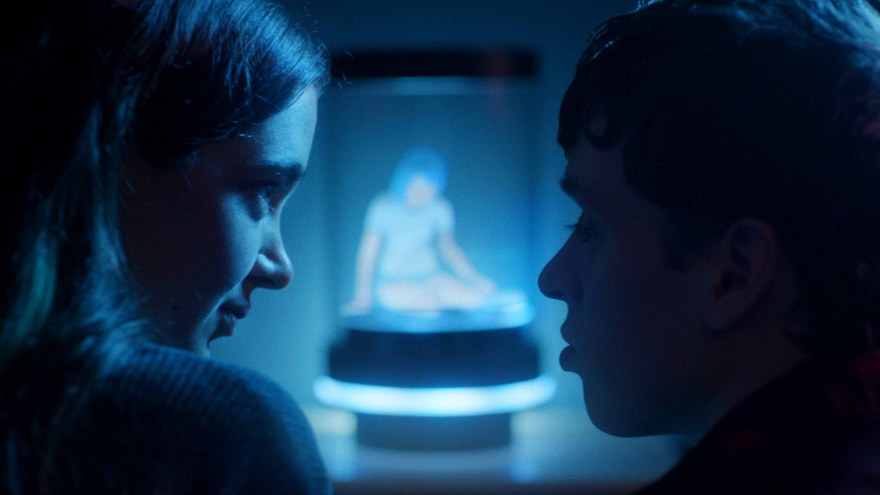Tea time with Yandere
Interview with William Laboury, director of Yandere
Why did you want to use an artificial human companion rather than an ex-girlfriend who controls Siri, Cortana or Alexa from afar?
I’ve been interested in the idea of artificial human companions ever since I saw an ad for this type of holographic girlfriend in Japan. You immediately wonder what she thinks about while she’s waiting the whole day for her owner, shut up in a box. The difference between her and Siri or Alexa is that she has a face: you project things onto it, you instantly feel empathy, even though you know it’s a program. So then I wondered how this type of character would take being dumped.
In general terms, do you think about the impact that the development of artificial intelligence might have on Humans? To what extent do these new technologies interest you?
For the character of Maïko, it’s not so much the aspect of her artificial intelligence that interested me, but more what that leads to – her emotional dependence. The only person Maïko knows is her owner – he bought her and programmed her so she’s obliged to love him. She doesn’t wonder about anything, it’s just her role. We can end up experiencing this sort of situation ourselves, especially during a breakup, when the world seems likes it’s crumbling around us. For me, technology was the way to address this feeling, magnified a thousand times in Maïko’s case, since love is all she has.
What is your connection to Japan?
Two of my shorts are connected to Japan, but for different reasons. When I made Hotaru, I was steeped in the films of Chris Maker, and Japan represented something very exotic and unknown for me, which worked well with the encounter that Martha has there. Yandere is connected to Japan because virtual characters play an important role, and that might have something to do with Japan’s animistic culture, which easily imbues objects with a soul. And there’s manga culture, which gave me the idea of the yandere – an archetypal female character whose uncontrollable jealousy turns her violent.
How did you work on the first part of the film where the main character seems so isolated?
The flash forward intro, where we see the human Maïko lost in a landfill, makes it possible for Maïko to be the main character. Because afterward, we go back and see her as a kind of dumb hologram. The intro allows us to project thoughts and emotions onto the hologram because we know she has them stirring deep within her, that something will shortly bloom from the pixels.
What interested you about the Russian doll (or domino?) effect with one artificial companion getting advice from another?
The redheaded hologram that Maïko meets creates a mirror effect. Like when you make two Siris talk to each other. It’s an abnormal situation and their conversation becomes absurd. The “little Maïko” is still conditioned by her role as AI, which means she represents a form of social pressure on Maïko, who’s set herself free, by telling her, “Your role isn’t to live your life. You must find your lover, your place is beside him”. She’s the little devil on Maïko’s shoulder, her evil conscience.
Have you discovered any advantages that the short film form offers?
I don’t find that short films afford advantages so much as specific choices. Yandere is relatively blunt and elliptical, it’s like a tale, so the viewer goes from long, drawn-out scenes to sped up ones that follow a different narrative mechanism. For example, the whole love story between Maïko and Tommy is shown in the opening credits. I find the short form as much a constraint as an opportunity; it forces you to confirm your choices.
Which works did you draw from?
They differ depending upon the period, but with Yandere I was inspired by Toy Story, the manga Future Diary, the character of the bell fairy (who is a pure yandere), Kore Eda’s Air Doll, the way Blade Runner 2049 portrays virtual characters, the freedom of tone in Love Exposure, by Sono Sion, the nocturnal, teenage atmosphere of The Myth of the American Sleepover.








